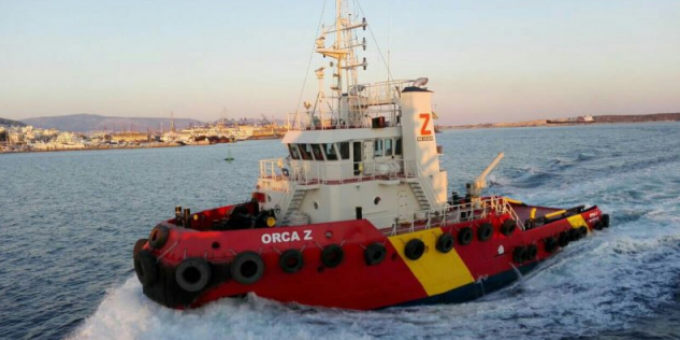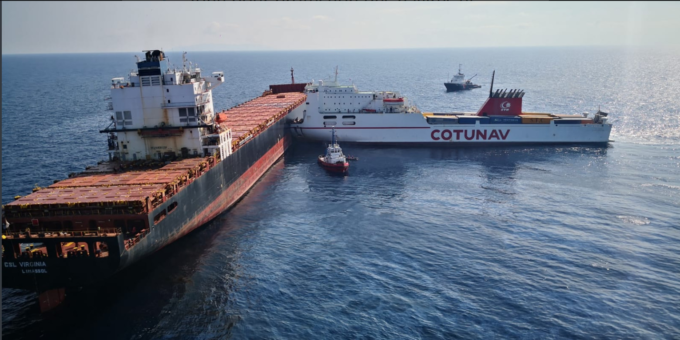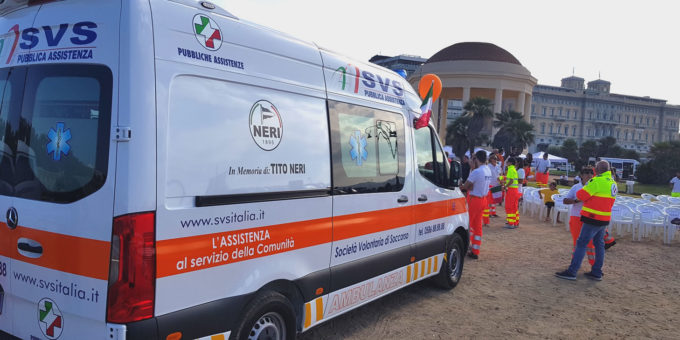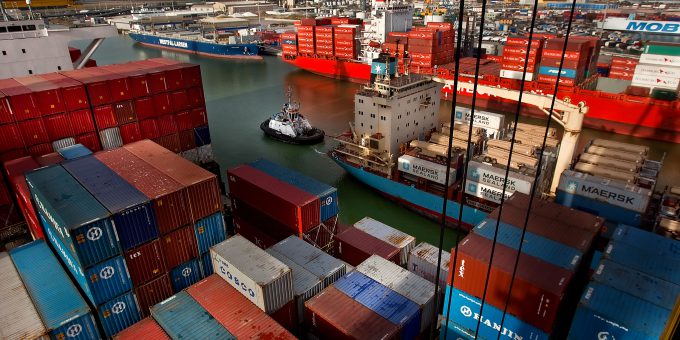Costa Concordia
On January 13, 2012, the cruise ship “Costa Concordia” was involved in a tragic accident
off the Giglio Island. The ship ran aground, slamming on the straight side. The grounding took place very close to the coast and this, no doubt, was the reason why many lives were lucky to be saved. Not all because 13 were the dead.
The Neri company realized what was happening on the island of Giglio very soon through a tug Captain living at Giglio, Giancarlo Fanni. Looking at the spread of news from the perspective of those working in the sea, the organizational reaction was immediate by offering services to Costa Crociere and engaging immediately on the scene of the casualty by attending the emergency meeting that the Admiral of the Coast Guard was immediately holding after the accident . Immediately we sent our tug “Algerina Neri” from Piombino Port. From TV footage, Costa Concordia had an initial list of 15-20 degrees. A significant list for that kind of ship. During the night, however, the measure increased to 45 degrees. It was a fortune that the spur of rock had prevented its overturning completely. Had she been in another position, she could have been overturned by trapping many people inside.
“On the first night we prepared the equipment for shipping from Livorno via the sea and from Smit Rotterdam’s warehouse and organized a team of technicians for a survey at the shipwreck scene. We arrived at Giglio the following morning, in close coordination with our long-term SMIT SALVAGE partner in Rotterdam. Our team included: a Salvage Master, a Naval Architect, the Diver’s Manager, and some salvage technicians.
We immediately established direct communication lines with the Coast Guard, the Fire Brigade and all Authorities who were present under the big green tent that the Italian Government had already set up.
In emergency situations like this one, you realize very soon that it is often a challenge to find out which authority is really in charge of making decisions. Everyone, of course, had a clear priority: saving human lives.
NERI and SMIT’s staff were catapulted in the middle of a gigantic salvage &rescue operation.
As time passed by, we were slowly moving from a chaos to a greater control scenario.
Giglio is a small island. Within a couple of hours, about 4,000 people fled to the ground, crowding the small village square to the harbor, the church and other buildings. They were assisted and comforted by emergency services and volunteers from the local community. As you might expect, the early hours were chaotic. Gradually, however, things became easier and more an everyday practice to keep contact among NERI and SMIT with the Coast Guard and the Authorities on site.
We received the “green light” to continue with our full mobilization for immediate response. Even without having had any contracts at that point by Costa Crociere, Neri and Smit mobilized 80 tons of salvage equipment from Rotterdam to Livorno in addition to as many as already present in Livorno. The equipment was then loaded on the “Meloria” pontoon, for the subsequent transport to Giglio.
Finally, the contract for the recovery of more than 2,000 tons of bunkers and other pollutants was signed during the night of January 16, 2012.
Our next challenge would have been to ensure a safe working environment for our salvage team. Meanwhile, the rescue operation and the search for the missing – was still under way: The search for human lives had priority. Meanwhile, we used the time to estimate that the Costa Concordia wreck was pretty stable to approach and work on the ship. For this purpose, we put into operation a series of investigations and analyses, combining forces to carry out submarine controls on the ship, checks on the seabed and the nature of the rock supporting the wreck. At the same time, at the request of the Italian Authorities, we deployed a double line of floating barriers along the entire outer perimeter of the ship in order to contain hydrocarbon spills.
The purpose of the work was to recover bunkers from ‘Costa Concordia’ from a total of 17 tanks. Subsequently, the contract was extended to ensure the recovery of the “dirty waters” from the sewage tanks. Thing that we did by mobilizing a set of oil tanker ships for the fight against pollution and the reception of hydrocarbons.
In such cases, it always takes some time to complete the search and rescue work of the shipwrecks and to carry out the risk assessment related to working near a wreck .
Once the Authorities had declared the rescue operations completed on January 28th, everything was in place to start pumping (fuel) from the “Costa Concordia” tanks.
The bad weather, however, fell on Giglio. It was not until February 12 that the bad weather was over and we proceeded to recover the hydrocarbons from the ship’s tanks. The Meloria pontoon crane was moored alongside the ship’s hull, so it acted as a surface platform for the underwater crew during the project. We had pumping systems, steam heating systems, and scuba divers for diving. In addition, we rented a tanker that we placed on one side of the pontoon, ready to receive recovered oil.
The logbook confirms that we started pumping the bunker tanks on February 12th at 16.55. By working we found out that we could reach acceptable pumping rates without the need to heat the bunker. The hub of the operation was the hot-tap system provided by SMIT, so that it would be possible to drill each of the tanks underwater without polluting. Gradually, all the tanks were cleared as pompable hydrocarbons and the operation ended on March 24th at 7.30.
Finally, we were assigned a role of ‘caretaking’, maintaining the anti-pollution and collecting and removing floating debris and seabed. We were also in stand-by for each response to the pollution and we carried out guardianship / security maintenance tasks.
Looking back, an exceptional aspect was undoubtedly the generosity of the small community of Giglio and the trust that the people laid in our work. In those early days, the locals of Giglio provided the catering service to the rescuers, and anyone else was on the island. Imagine a very crowded island of hundreds of journalists and television teams coming from all over the world.
Trust we were honored to be able to repay with the satisfaction of a well done job. There were more than 2,000 tonnes of diesel fuel in the Costa Concordia tanks – a huge threat to the island’s economy and the Tuscan sea and finally we managed to remove it.



